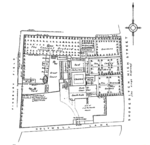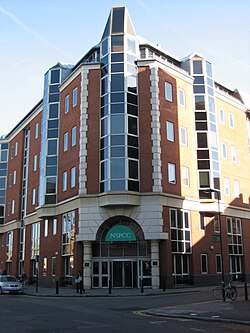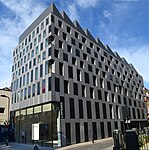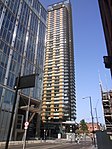The Theatre

The Theatre was an Elizabethan playhouse in Shoreditch (in Curtain Road, part of the modern London Borough of Hackney), just outside the City of London. It was the first permanent theatre ever built in England. It was built in 1576 after the Red Lion, and the first successful one. Built by actor-manager James Burbage, near the family home in Holywell Street, The Theatre is considered the first theatre built in London for the sole purpose of theatrical productions. The Theatre's history includes a number of important acting troupes including the Lord Chamberlain's Men, which employed Shakespeare as actor and playwright. After a dispute with the landlord, the theatre was dismantled and the timbers used in the construction of the Globe Theatre on Bankside.
Excerpt from the Wikipedia article The Theatre (License: CC BY-SA 3.0, Authors, Images).The Theatre
New Inn Yard, London Shoreditch (London Borough of Hackney)
Geographical coordinates (GPS) Address Nearby Places Show on map
Geographical coordinates (GPS)
| Latitude | Longitude |
|---|---|
| N 51.524583333333 ° | E -0.08 ° |
Address
Foxtons
New Inn Yard
EC2A 3ES London, Shoreditch (London Borough of Hackney)
England, United Kingdom
Open on Google Maps









